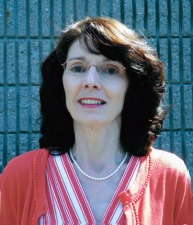Dear runners of the world, I think I get it now...
PRIME – April 2015
By Debbie Gardner
debbieg@thereminder.com
First off, let me admit I’ve always been a skeptic when it came to running as a fitness activity.
I’d drive past those people in spandex running tights and brightly colored sneakers, slogging it out down the sides of the road in all types of weather, and I think – what are they doing? Are they crazy to be out in this [substitute the words show, rain, freezing cold or blazing sun here]?
Full disclosure – I tried running in my 20s. But after narrowly escaping from a very aggressive [and unleashed] German Shepherd, and suffering though a bad bout of shin splints, I decided pounding the pavement for exercise was a sport that only someone immune to pain (and unafraid of dogs) would pursue.
But of late, my opinion of the sport has changed.
First, about a year I met members of the Pioneer Valley Women’s Running Club while working on a story for another one of Reminder Publications products.
I spent an evening with members of the club as they helped would-be exercisers learn how to train properly as part of the club’s annual Walk-to-Run clinic.
As I interviewed many of the would-be runners for my story, I discovered there was more than just getting in shape behind their willingness to come out and be put through their paces by the club’s trainer every Thursday night.
Many of them were there to prove something to themselves – to reach a milestone for a significant birthday, to overcome an obstacle, or to achieve a dream.
The weren’t running to recapture a bikini body. They were running for their self-esteem.
Then, late last year, the proof copy of a book about women and running landed on my desk. Written by Canadian journalist Margaret Webb, the book “Older, Faster, Stronger,” not only chronicled Web’s challenge to get herself in prime running shape in a year, it also took a serious, scientific look at how this form of exercise seemed to be staving off the effects of age-related physical decline among a group of elite women runners between the ages of 70 and 90.
The results of the research were, to put it mildly, very impressive, as were the stories of older elite runners who were profiled in the book.
I went back to the running club, asking the president of the group if she knew of any middle-aged runners who might be willing to talk with me.
I met four exceptional athletes, whose stories you will find in this months’ feature.
And again, I found that running for them was less about fitting into a dress size, and more about self-awareness.
Words like “goal setting,” and “feeling comfortable with myself” kept cropping up, as did the mention of a support system that spoke more about empowerment than girl-talk.
Somewhere in the middle of those miles, exercise had turned into a kind of self-actualization.
Perhaps this jump in female runners is a sign that there’s a second women’s movement brewing, one that takes its strength not from changing the workplace, but from changing one’s sense of personal accomplishment.
No mention of this running boom, however, should be made without a nod to Title IX – which in 1972 gave girls the same rights to participate in sports as boys.
After all, most of today’s middle-age runners grew up in a title IX world, and didn’t know the kind of discrimination Katherine Switzer experienced when she tried to run the Boston Marathon in 1967. She had to register using just her initials, and then narrowly escaped being physically ejected from the course when her identity became apparent.
When it comes to sports, perhaps women have come a long way.
And I’m not just talking about the miles we’ve logged.

